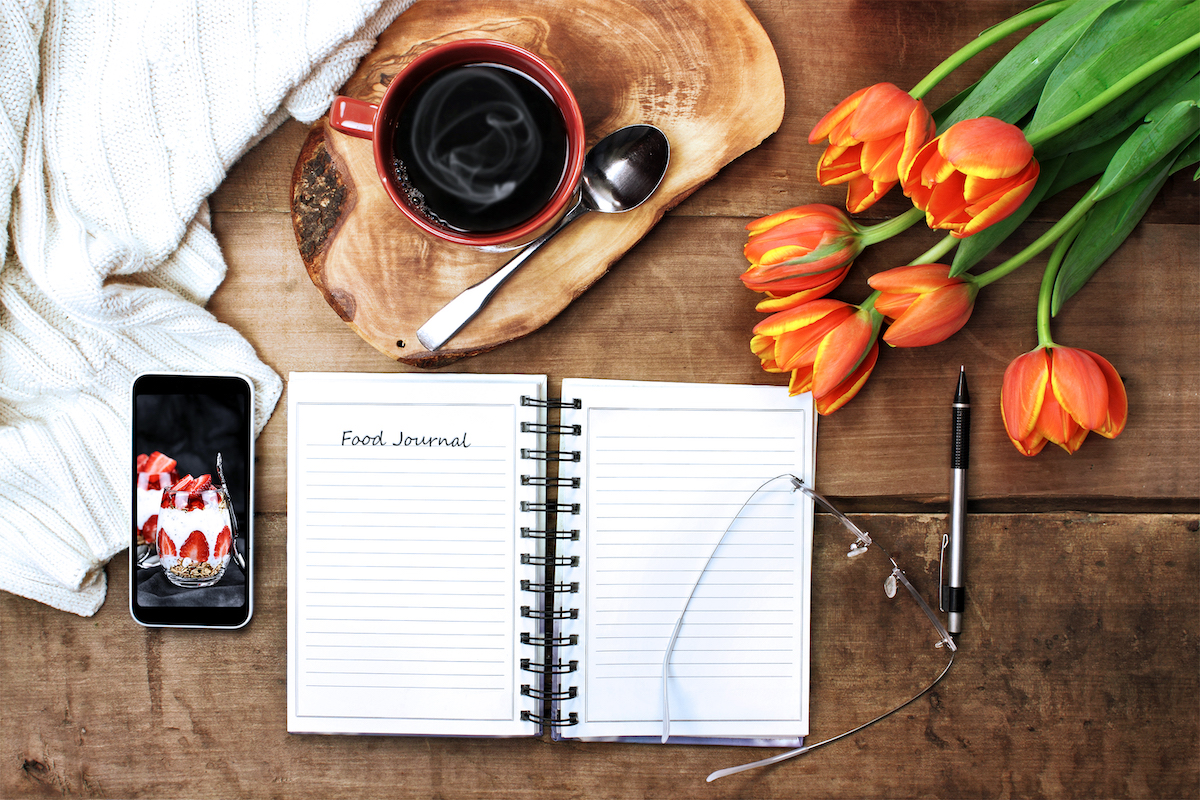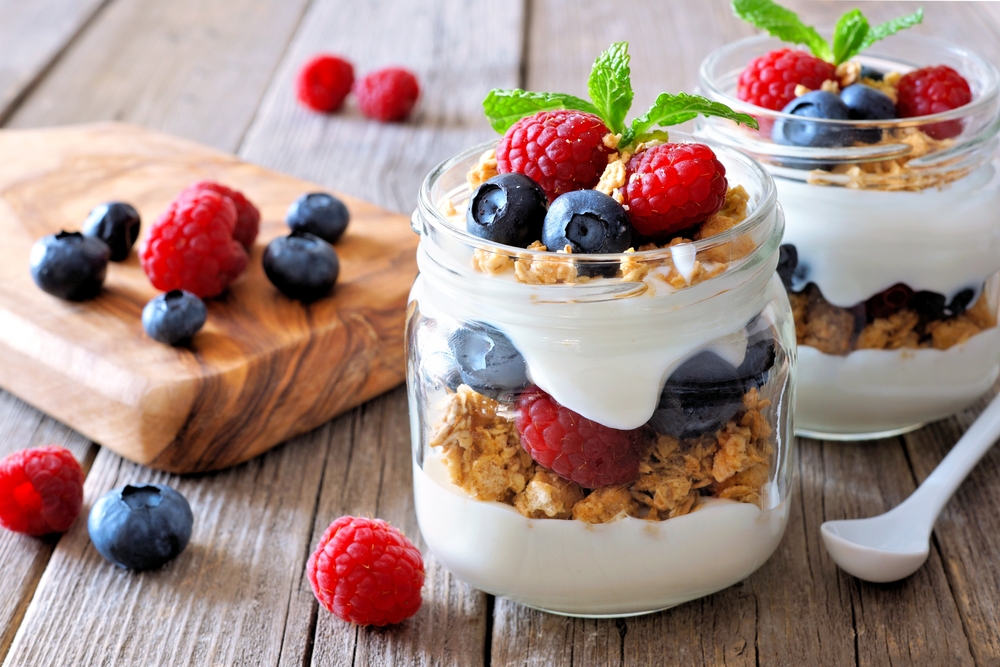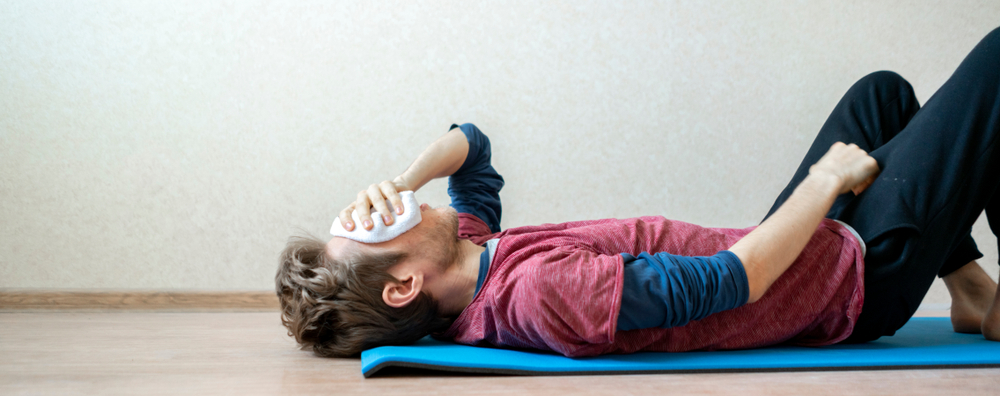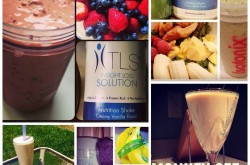By: Amanda Belo
Whether you’re trying to lose weight or just want to eat healthier, food journaling could add huge benefits. Yes, it’s one more thing to add to your full list of things but, in the long run, tracking what you eat can benefit you for life! So, what’s the best way to go about food journaling + why would you even want to? We’ve got some answers that may inspire you.
What Is a Food Journal?
Also known as a food diary or a food log, a food journal is essentially a record of everything you eat and drink in a given day – ideally every day. It can provide information and insight into your relationship with food and patterns you have that are helping you or possibly preventing you from living up to your healthiest potential.
What Do I Include in Food Journaling?
The obvious things to include in your food journal are what you eat and drink, but it’s important to note that you should include everything you’re consuming – not just the things you want to out down! Did you add croutons to your salad or creamer to your coffee? That counts!
For some, their journals get a little more involved. If you want to paint a more complete picture of your intake and lifestyle, it may be helpful to include additional notes such as:
- Time of day
- How long you spent eating
- Where you were
- What you were doing
- How you felt during and after you ate
- How hungry you actually were/hunger signals you noticed
Why Should I Be Food Journaling?
Professional health organizations and practitioners find value in keeping a record of daily food intake, including TLS® Director, Susan Pasqual, MSN, RN, CNSc! Food journals can be tools in health programs for patients and participants to evaluate and adapt their diets to suit a healthier lifestyle unique to them, but they also keep you honest!
“Although you may think you had a great day because you didn’t eat those donuts a co-worker brought in, you may reflect back and realize you didn’t eat enough, went too long between eating or didn’t get your water in,” says Susan.
Even though it’s humbling to hold yourself accountable for those times when you may have fallen short, there’s still plenty of room for congratulating yourself on the days you do well! Pasqual notes that keeping a food log isn’t just for showing you what you do wrong. “Tracking both good and bad days allows you to reflect, seeing how you felt on your 100% days as well as when you weren’t feeling your best”.
There is also scientific support for the value of keeping a food journal as part of a weight management regimen. In a 2008 weight loss study published in the American Journal of Preventative Medicine, participants who kept a daily log of their food intake lost double the amount of weight compared to those who did not. In a 2011 study, seven out of 13 evidenced-based weight loss practices were relevant to becoming more aware of how you interact with food, including food journaling, portion control, reading nutrition labels and planning meals.
In Pasqual’s experience, she adds that her clients have lost more weight using a food journal than those who do not monitor their food.
Food Journaling Meets Tech
It’s pretty rare these days to not be able to say “there’s an app for that” so, of course, there’s quite a few that have popped up for food tracking! The tried and true method of journaling with paper and pen is a great option, but if you’re more tech-minded, these apps may work well for you.
- MyFitnessPal Calorie Counter & Diet Tracker
Log in breakfast, lunch, dinner and snacks throughout the day. Features a food database of over 300,000,000 items, personal food database, personalized diet profile and more. Available for download on iTunes and Google Play.
- YouAte
Are you more of a visual person? Forget the counting and measuring, and start snapping those photos! Take of picture of your meal or snack before you eat, select whether it is “on-path” or “off-path”, and add your hunger cues. More mindful eating tools are at your fingertips. Available for download on iTunes and Google Play.
- My Diet Coach
This one uses the avatar trend to keep you motivated and track your progress. This app includes a calorie tracker, inspiring tips and quotes, rewards and more. My Diet Coach also features a weight tracker, so that as you lose weight, your avatar changes with you. Available for download on iTunes and Google Play.
- See How You Eat
See How You Eat encourages balanced eating without calorie counting, focusing on 80/20 nutrition coaching – eat clean 80% of the time and indulge the remaining 20%. This app allows you to log your meals with a food photo diary, get feedback on those meals, receive nutrition tips, meal reminders and more. Available for download on iTunes and Google Play.
- Lose It!
Created for healthy and sustainable weight loss, Lose It is another great option for food journaling and more. Set your goal and weight loss plan, track food intake, connect other apps and devices for integrated results and join the Lose It! Weight loss community. Available for download on iTunes, Google Play and Amazon.
- Cronometer
Cronometer is simple to use and lets you track calories and nutrients online or in the app if you’re on the go. You can search the database or add your own foods for tracking. Additionally, you can view your dietary habits over time. Available for download on iTunes and Google Play.
- FatSecret
FatSecret allows you to record what you’re eating in a food diary, the ability to track your progress, tips and recommendations based on your profile, a community to keep you motivated, and more to help you achieve your goals. Available for download on iTunes, Google Play and Microsoft Store.
- Lifesum
Lifesum is a food and nutrition tracker that seeks to make “healthy living, simplified” on your health and weight loss journey. It features personalized diet and meal plans, nutrition advice and healthy recipes. There’s also an in-app calorie counter. Available for download on iTunes and Google Play.
- Fooducate
Fooducate looks at product nutrition panels and ingredient lists to reveal nutritional information so you can make more educated, healthy food choices. You can personalize your experience by creating a health profile that includes desired weight loss rate, dietary goals and health conditions. Features include a barcode scanner to show personalized nutrition grade, integrated food and exercise tracker, a community forum, recipes, nutrition news and advice, and more. Available for download on iTunes and Google Play.
- Daily Water Tracker Reminder
Drinking water is one of the most important things you can for your health, including weight management. This app logs your water intake and lets you set goals. Plus, if you’re just getting used to the idea of drinking water more regularly, this app features a daily reminder and motivation every time you sip. Available for download on iTunes and Google Play.
Barriers to Food Journaling
In a 2015 study, researchers identified common barriers in mobile food journaling. These findings are easily relatable to documenting your food intake even if you’re putting pen to paper.
- Writing down everything you eat and drink takes too much time and effort.
- Challenging to measure food accurately, accounting for proportions and ingredients
- Perceived stigma (i.e. feeling embarrassed to journal in front of other people, hesitating to ask about ingredients if eating out at a friend’s house)
- Forgetting to log entries
- Choosing not to journal (i.e. feeling shame or guilt because you ate too much, feeling shame or guilt because you ate something that was unhealthy, creating an obsession about what you eat)
We’re only human. With that said, don’t let a few challenges derail you! Keep your eye on your goals, think of the benefits you will receive and knowledge you will gain from food journaling.
TLS® Tips:
BE HONEST!
The only person reading this is you. If you cheat, your journal is automatically inaccurate which doesn’t do you any good at the end of the day!
Log It Before You Forget It
Try to write down everything you eat right away so that you don’t forget. It can become overwhelming at the end of the day if you have to remember everything since 8 a.m. and you can better maintain accuracy.
Little Things Matter
Try your best to write down everything, even if it’s just a handful of something. Food journaling can prevent mindless eating if you’re aware of every morsel that goes into your mouth.
Make Your Journal Work for You
If you have a physical journal you write in, make sure it’s portable and easy to transport anywhere (e.g. to work, on vacation, etc.).
If you choose to track your food digitally, make sure you are prepared to record your eating the old-fashioned way in case your phone dies or you can’t get to a computer. Transfer the written records when you have access again.
Make Time for Review
Try to review your list at least once a week so you can
1) Ask yourself if what you eat and drink supports your goal (e.g. weight loss, hunger control, healthier eating)
2) begin to notice patterns, emotions and attitudes when it comes to food.
Are you food journaling?
Tell us what works for you (and what doesn’t) in the comments below!
Sources:
American Heart Association. (2014). Food Diary: Keep Track of What You Eat.
Brown, R. (2017, January 24). The Top 50 Weight Loss Weapon for Adults.
Heller, A. (2016, July 29). 10 Tips for Keeping a Food Journal for Weight Loss.
Rammohan, Y. (2012). 5 Tips for an Accurate Food Journal.
Real Simple. (n.d.). How to Keep a Food Journal.
Thomas, K. (2016, October 7). Food Diary Can Aid In Weight Loss.





Comments (0)